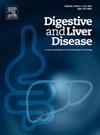肝移植的四十年:适应证的演变、流行病学的转变和移植后预后的改善
IF 3.8
3区 医学
Q1 GASTROENTEROLOGY & HEPATOLOGY
引用次数: 0
摘要
背景:在过去的几十年中,由于直接作用抗病毒药物(DAAs)的引入,代谢功能障碍相关脂肪变性肝病(MASLD)患病率的上升,以及肝细胞癌(HCC)列表标准的扩大,肝移植(LT)的适应症发生了变化。临床管理的进步减少了并发症,提高了移植后的生存率。方法我们在那不勒斯Cardarelli医院肝移植中心进行回顾性研究,包括1985 - 2025年间居住在坎帕尼亚的1496例肝移植受者,其中581例在我们中心进行了肝移植。根据移植时间将患者分为三组:2005年以前(A组)、2005 - 2015年(B组)和2016-2025年(C组)。分析了三个队列中肝移植、肝移植后肿瘤和胆道并发症的适应症。结果患者以男性居多(p > 0.05)。肝细胞癌移植患者比例随着时间的推移显著增加(A组:15%,B组:50%,C组:46.22%;p < 0.05)。MASLD相关肝硬化已成为越来越常见的肝移植指征,尤其是近十年来(A组:2.7%;B组:4.7%;C组:15%,其中纯MASLD患者为6.13%;p < 0.05)。相反,HCV患者的LT明显下降(A组:38.3%,B组:45.2%,C组:25.4%;p < 0.05)。HBV和HBV/HDV感染率在A组较高(p < 0.05)。肝移植后新发恶性肿瘤的发生率显著降低(A组:25.16%,B组:20.43%,C组:9.19%;p < 0.05),可能是由于免疫抑制策略的改善。尽管HCC复发率增加(A组:3.1%,B组:6.52%,C组:5.18%;p < 0.05),但HCC复发死亡率在所有组中逐渐下降(p < 0.05)。胆道并发症发生率明显降低(A组:15.8%,B组:15.4%,C组:10.3%;p < 0.05)。对这一大型移植患者队列的分析强调了40年来肝移植适应症的重大变化。目前,HCC和MASLD是肝移植的主要适应症。临床和免疫抑制治疗的进步有助于降低胆道并发症和新发恶性肿瘤的发生率。尽管HCC复发率有所上升,但相关死亡率有所下降,这可能反映了治疗方案的改进。本文章由计算机程序翻译,如有差异,请以英文原文为准。
Four Decades of Liver Transplantation: Evolving indications, shifting epidemiology, and improved post-transplant outcomes
Background
Indications for liver transplantation (LT) changed over the past decades, driven by the introduction of direct-acting antivirals (DAAs), the rising prevalence of metabolic dysfunction-associated steatotic liver disease (MASLD), and the expansion of criteria for hepatocellular carcinoma (HCC) listing. Advances in clinical management have led to reduce complications and improve post-transplant survival.
Methods
We conducted a retrospective study at the Liver Transplant Center of Cardarelli Hospital in Naples, including 1,496 liver transplant recipients residing in Campania between 1985 and 2025, of whom 581 were transplanted at our center. Patients were stratified into three groups based on transplant period: before 2005 (Group A), 2005–2015 (Group B), and 2016–2025 (Group C). Indication for LT, post-LT neoplasms, and biliary complications were analyzed across the three cohorts.
Results
Most transplant recipients were male (p > 0.05). The proportion of patients transplanted for HCC increased significantly over time (Group A: 15%, Group B: 50%, Group C: 46.22%; p < 0.05). MASLD-related cirrhosis has become an increasingly common indication for LT, especially in the most recent decade (Group A: 2.7%; Group B: 4.7%; Group C: 15%, including 6.13% with pure MASLD;; p < 0.05). Conversely, LT for HCV declined markedly (Group A: 38.3%, Group B: 45.2%, Group C: 25.4%; p < 0.05). HBV and HBV/HDV cases were more prevalent in Group A (p < 0.05).The incidence of de novo malignancies post-LT significantly decreased (Group A: 25.16%, Group B: 20.43%, Group C: 9.19%; p < 0.05), likely due to improved immunosuppressive strategies. Although HCC recurrence rates increased (Group A: 3.1%, Group B: 6.52%, Group C: 5.18%; p < 0.05), mortality from HCC recurrence progressively declined across all groups (p < 0.05). Biliary complications also decreased substantially (Group A: 15.8%, Group B: 15.4%, Group C: 10.3%; p < 0.05).
Conclusions
The analysis of this large cohort of transplant patients highlights a significant change in indications for liver transplantation over four decades. Currently,HCC and MASLD are the primary indications for liver transplantation. Advances in clinical and immunosuppressive management have contributed to lower rates of biliary complications and de novo malignancies. Despite a rise in HCC recurrence, related mortality has declined, likely reflecting improved therapeutic options.
求助全文
通过发布文献求助,成功后即可免费获取论文全文。
去求助
来源期刊

Digestive and Liver Disease
医学-胃肠肝病学
CiteScore
6.10
自引率
2.20%
发文量
632
审稿时长
19 days
期刊介绍:
Digestive and Liver Disease is an international journal of Gastroenterology and Hepatology. It is the official journal of Italian Association for the Study of the Liver (AISF); Italian Association for the Study of the Pancreas (AISP); Italian Association for Digestive Endoscopy (SIED); Italian Association for Hospital Gastroenterologists and Digestive Endoscopists (AIGO); Italian Society of Gastroenterology (SIGE); Italian Society of Pediatric Gastroenterology and Hepatology (SIGENP) and Italian Group for the Study of Inflammatory Bowel Disease (IG-IBD).
Digestive and Liver Disease publishes papers on basic and clinical research in the field of gastroenterology and hepatology.
Contributions consist of:
Original Papers
Correspondence to the Editor
Editorials, Reviews and Special Articles
Progress Reports
Image of the Month
Congress Proceedings
Symposia and Mini-symposia.
 求助内容:
求助内容: 应助结果提醒方式:
应助结果提醒方式:


